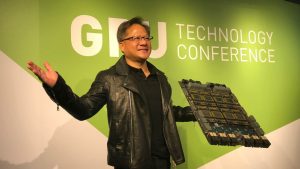Editor’s note: This post is one in a series that features individual creators and developers who use NVIDIA Omniverse to boost their artistic processes.

Growing up in the Philippines, award-winning filmmaker Jae Solina says he turned to movies for a reminder that the world was much larger than himself and his homeland.
He started the popular YouTube channel JSFILMZ a decade ago as a way to share home videos he made for fun.
Since then, he’s expanded the channel to showcase his computer graphics-based movies, which have won the Best Animation and Best Super Short Film awards at the Las Vegas Independent Film Festival.
He also posts tutorials for virtual filmmaking with tools, including NVIDIA Omniverse — a physically accurate 3D design collaboration platform exclusively available with NVIDIA RTX GPUs and part of the NVIDIA Studio suite of creator tools.
Making tutorials is a way of paying it forward for Solina, as he is self-taught, gaining his computer graphics skills from other artists’ YouTube videos.
Solina now lives in Las Vegas with his wife and two kids, balancing filmmaking with part-time school and a full-time job.
“The only thing stopping you from creating something is your effort and imagination,” he said. “There are so many free tools like Blender or Omniverse that are readily available, enabling us to create what we want.”
Virtual Film Production
Solina creates computer graphics-based animation films, which can usually take large amounts of time and money, he said. NVIDIA Omniverse eases this process.
“With Omniverse, I don’t have to wait a full week to render a 30-second animation,” Solina said. “The rendering speed in Omniverse is superb and saves me a lot of time, which is important when balancing my filmmaking, non-creative work and family.”
Solina uses an NVIDIA GeForce RTX 3060 GPU, as well as Omniverse apps like Audio2Face, Create and Machinima to create his films virtually.
He also uses Omniverse Connectors for 3D applications like Blender and Autodesk Maya, as well as Reallusion’s iClone and Character Creator, with which he edits motion-capture data.
As a solo filmmaker, Solina said his main challenge is finding virtual assets — like characters and environments — that are photorealistic enough to use for movies.
“My process can definitely be a bit backwards, since the ideal method would be to write a script and then find the assets to make the story come alive,” he said. “But when I’m limited in my resources, I have to think of a storyline that fits a character or an environment I find.”
New support for the Omniverse ecosystem provided by 3D marketplaces and digital asset libraries helps solve this challenge — with thousands of Omniverse-ready assets for creators, all based on Universal Scene Description format.
Looking forward, Solina plans to create a short film entirely inside Omniverse.
Explore the NVIDIA Omniverse Instagram, gallery, forums and Medium channel. Check out Omniverse tutorials on Twitter and YouTube, and join our Discord server and Twitch channel to chat with the community.
The post From Imagination to Animation, How an Omniverse Creator Makes Films Virtually appeared first on The Official NVIDIA Blog.







